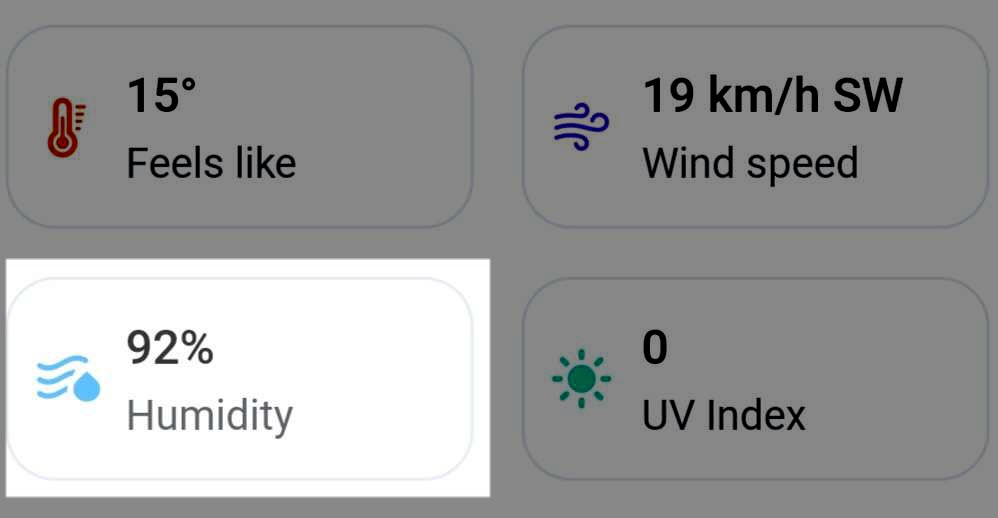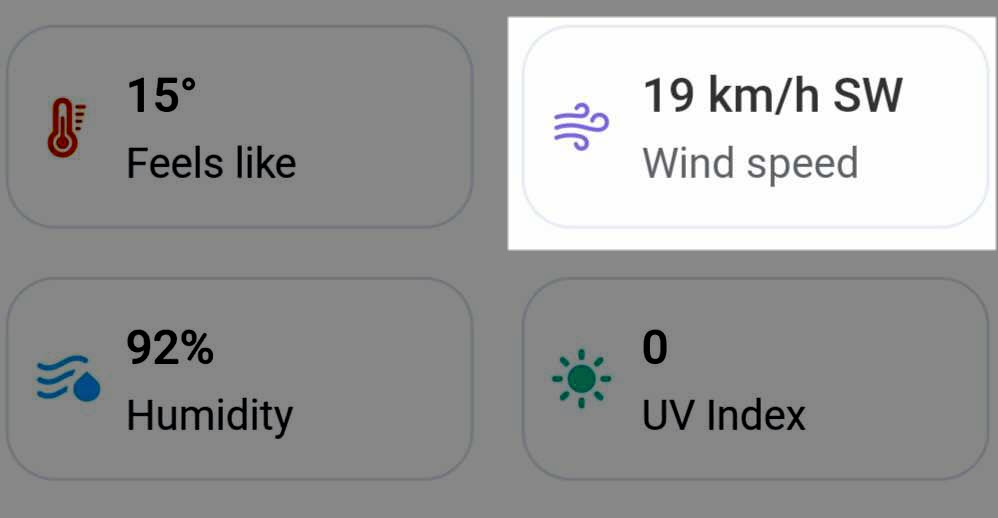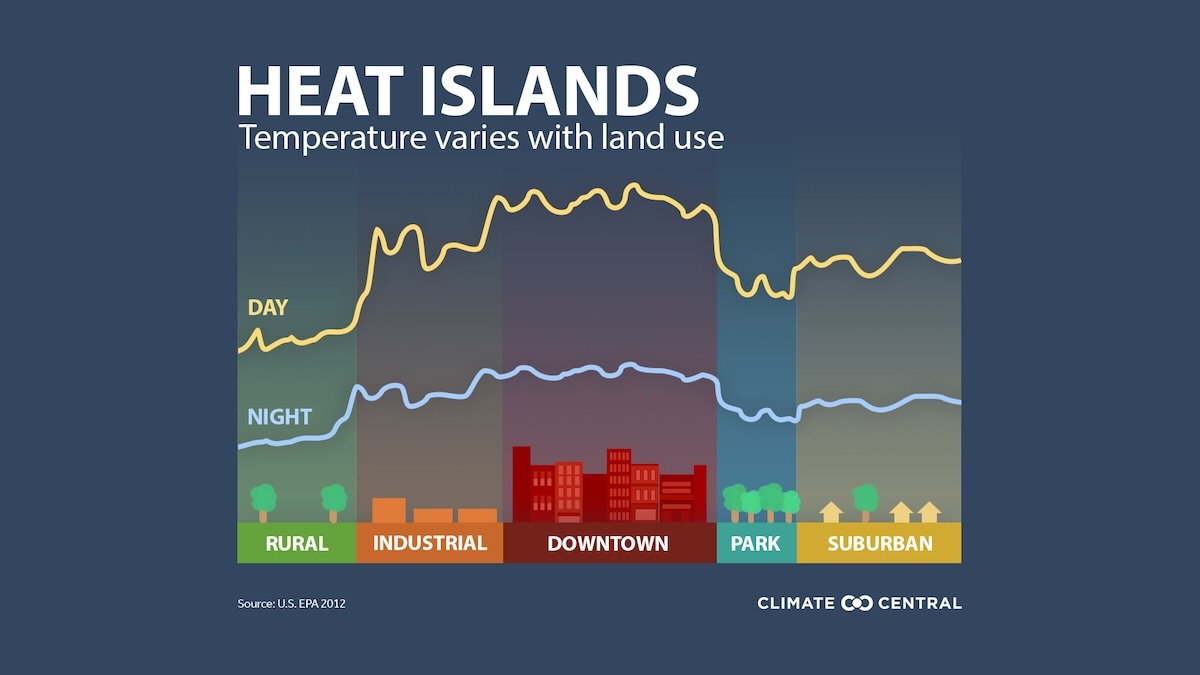Have you ever noticed that on a crisp autumn morning, a temperature of 60°F (15°C) can feel refreshing, while the same temperature on a sweltering summer day can make you feel uncomfortably hot?
Not only the thermometer reading determines our temperature sensation. Various factors can significantly influence how we perceive temperature, making it feel different even when the air temperature remains constant. In this blog post, we’ll explore the science behind these differences and the factors that contribute to our temperature perception, such as:
- Humidity
- Wind speed
- Sunlight
- Personal factors
- Thermal inertia
- Urban heat island effect
Humidity

Humidity refers to the amount of moisture in the air and is a critical factor in how we experience temperature. It has a profound impact on how our bodies cool themselves through the process of evaporative cooling.
When the air is dry, sweat evaporates from our skin more efficiently, making us feel cooler. Conversely, in high humidity, sweat doesn’t evaporate as readily, which can lead to a muggy, sticky feeling, even at the same thermometer reading.
To measure how the temperature feels on our skin, meteorologists use a heat index. The formula is based on the air temperature and relative humidity. You can calculate the index yourself by using online calculators.
If you belong to people from risk groups, you should be especially careful when the heat index is over 80 and plan your outdoor activities accordingly. Here’s how you can suffer from a high heat index:
| Heat Index | Heat Disorders |
|---|---|
| 80-90 | You may feel weak if you’ve been outdoors or physically active for too long. |
| 90-105 | You may get a sunstroke, have muscle pain, or feel weak if you’ve been outside or physically active for an extended period of time. |
| 105-130 | You may get a sunstroke, have muscle pain, feel weak, or get a heat stroke if you’ve been outdoors or physically active for a long time. |
| 130 or higher | You are highly likely to get a heatstroke and/or sunstroke if you’ve been outdoors for too long. |
Wind Speed

Wind can either enhance or diminish our perception of temperature. When there’s a gentle breeze on a warm day, it can promote convective heat loss from our bodies. As a result, we feel cooler than the actual air temperature. On the other hand, strong winds can have the opposite effect. This is because they increase the rate of heat loss from our bodies, making us feel colder than the thermometer suggests.
To provide a more accurate representation of the perceived temperature, meteorologists use the wind chill index. The calculation considers wind speed and temperature. As the heat index, the wind chill index can be calculated online.
Sunlight
The presence or absence of sunlight can significantly affect how we perceive temperature. On a sunny winter day, the sun’s rays can make the air temperature feel warmer than it actually is. At the same time, on a cloudy day, the lack of direct sunlight can make the same temperature feel colder. This phenomenon is due to the sun’s ability to radiate heat, which can make us feel more comfortable in lower temperatures.
Personal Factors in Temperature Perception
Individual factors such as age, gender, metabolism, and acclimatization can influence our perception of temperature. For example, children and the elderly are more sensitive to temperature extremes, while physically active individuals may have a higher heat tolerance. People who have recently moved to a different climate may take some time to adjust to the new climate.
Thermal Inertia
Thermal inertia means how hard or easy it is for a material or substance to change its temperature. It shows how fast or slow a substance gets hotter or colder when its surroundings change.
Objects, such as buildings, roads, or bodies of water, have different thermal properties. They can absorb and release heat at varying rates, which can influence how we perceive temperature throughout the day.
Large bodies of water, such as oceans and lakes, have significant thermal inertia. They can store heat during summer and release it gradually in winter, moderating the climate of nearby coastal regions.
Urban Heat Island Effect

Urban areas tend to trap heat due to the abundance of concrete, asphalt, and buildings that absorb and radiate heat. This can make urban areas feel warmer than surrounding rural areas, even if the actual air temperature is the same. During heatwaves, urban areas can experience significantly higher temperatures than surrounding rural areas.
Additionally, unlike rural areas, urban areas often have fewer trees and green spaces. Trees provide shade and release moisture through a process called transpiration, which has a cooling effect. The lack of greenery in cities contributes to higher temperatures.
Conclusion
A combination of factors such as humidity, sunlight, wind speed, and others can all influence how we perceive temperature. Understanding these factors can help us better prepare for and adapt to varying weather conditions, ensuring that we stay comfortable regardless of what the thermometer says. So, next time you step outside and the temperature feels different than expected, remember that it’s not all in your head; it’s the weather perception science at work!






